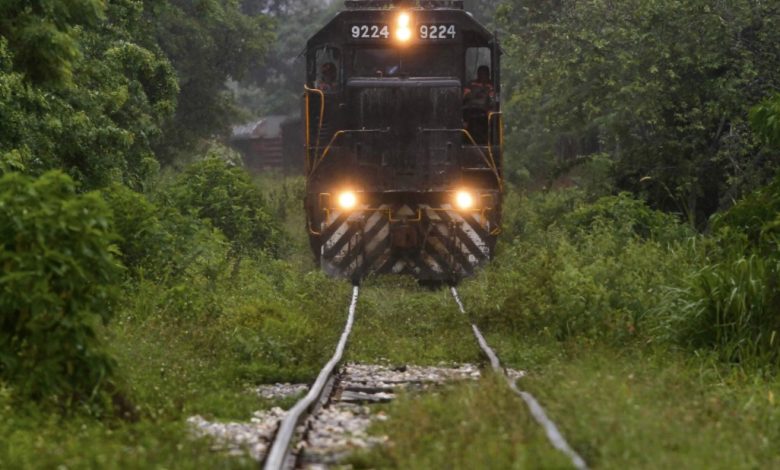Railroad truck

Bogies
US-style railroad truck (bogie) with journal bearings
View from under the bogie of a train
Main article: Bogie
A bogie (/ˈboʊɡi/ BOH-ghee) is a wheeled wagon or trolley. In mechanics terms, a bogie is a chassis or framework carrying wheels, attached to a vehicle. It can be fixed in place, as on a cargo truck, mounted on a swivel, as on a railway carriage or locomotive, or sprung as in the suspension of a caterpillar tracked vehicle. Usually, two bogies are fitted to each carriage,
wagon or locomotive, one at each end. An alternate configuration, which is often used in articulated vehicles, places the bogies (often Jacobs bogies) under the connection between the carriages or wagons. Most bogies have two axles, as this is the simplest design, but some cars designed for extremely heavy loads have been built with up to five axles per bogie. Heavy-duty cars may have more than two bogies using span bolsters to equalize the load and connect the bogies to the cars. Usually, the train floor is at a level above the bogies, but the floor of the car may be lower between bogies, such as for a double decker train to increase interior space while staying within height restrictions, or in easy-access, stepless-entry, low-floor trains.
Motive power
Main article: Locomotive
Swiss Electric locomotive at Brig, Switzerland
The first trains were rope-hauled, gravity powered or pulled by horses, but from the early 19th century almost all trains were powered by steam locomotives. From the 1910s onwards, steam locomotives began to be replaced with diesel and electric locomotives; al
though these new forms of propulsion were far more complex and expensive than steam power, they were less labor-intensive, and cleaner. At about the same time, self-propelled multiple unit vehicles (both diesel and electric) became much more widely used in passenger service. Dieselisation of locomotives in day-to-day use was completed in most countries by the 1970s. Steam locomotives are still used in heritage railways operated in many countries for the leisure and enthusiast market.[citation needed]
